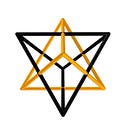“Greetings Youtubers” I say, starting my Mr. Roger’s like kid-friendly show, “greetings Youtubistas” (weird).
I go on to explain, at least in one video, how “Youtubista” derives from “Pythonista” which is our preferred name for “one who uses Python” (the computer language).
Those familiar with the lingua franca, i.e. Latinate languages (an early Esperanto), recognize “Pythonista” is femininely gendered and “Pythonisto” sounds dumb (no one uses it).
This gender bias fits well with PyLadies, a global network, and, I would claim, with the gender of “Naga”, whom I introduce as a retired mascot. She made it to a few Pycons and OSCONs, perhaps even a Djangocon back when they had that unicorned pony.
I’d say “the age of mascottery” is behind us at the moment, which means it’s likely to arise again (perhaps sooner than we think, read on).
What I’ve been doing on Youtube involves Python pretty obviously, which I then blend with a flavor of geometry that’s decidedly spatial in nature. I’m not bound to the plane as strictly as the Euclidean crowd is, not that I’m working outside of Euclid. I use the Pythagorean Theorem as much as anyone.
